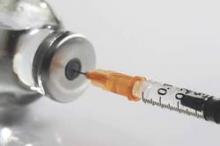Researchers have created a risk score to help identify patients at high risk for Clostridium difficile infection after hospitalization, for future use in vaccine trials, according to a new study.
C. difficile is the most common pathogen type in health care–associated infections and the leading cause of enterocolitis-associated deaths. Identification of patients who are at high risk for C. difficile is important in the development of future vaccines.
Dr. James Baggs, epidemiologist at the Centers for Disease Control and Prevention, and his colleagues conducted a retrospective cohort study to identify groups at high risk for C. difficile infection (CDI) for future vaccine trials. Their results were published in Vaccine online Oct. 9.
Data on medications and discharge were obtained from two large academic medical centers in Connecticut and New York. This information was linked to surveillance data from the Emerging Infections Program on active population-based CDIs. Participants were included if they had a hospital stay without a history of CDI with a primary outcome of infection 28 days or more after discharge.
To identify predictors of CDI after discharge, the investigators used a backward elimination employing a Cox proportional hazards model. They then created a CDI risk index based on the predictors.
During the study period, a total of 35,186 index hospitalizations were identified in Connecticut and New York. CDI diagnosis 28 days or more after discharge was observed in 288 patients (0.82%).
Initial models did not perform well in cross-site validation; however, a combined model that included age, past hospitalizations, use of 3rd/4th generation cephalosporin, clindamycin, or fluoroquinolone antibiotics was developed. This validation cohort resulted in a risk score that was predictive (P less than .001).
Finally, the study participants were divided into high-risk and low-risk groups based on the distribution of scores in the cohort. The low-risk group experienced CDI diagnosis 28 days or more after hospitalization at a rate of 0.3% versus 1.6% in the high-risk group.
“Our study identified specific parameters for a risk index that can be applied at hospital discharge to identify a patient population with increased risk of CDI [greater than or equal to] 28 days after discharge that could be targeted for vaccine trials,” Dr. Braggs and his coauthors wrote.
The authors noted several limitations to the study. For example, they indicated that data was obtained from two hospitals which may not represent some minority populations. Therefore, data from other hospitals may be able to help identify if the risk index is generalizable.
No conflicts of interest were reported. The study was partially funded by GlaxoSmithKline through the CDC Foundation, and GSK had the opportunity to review the preliminary manuscript.


